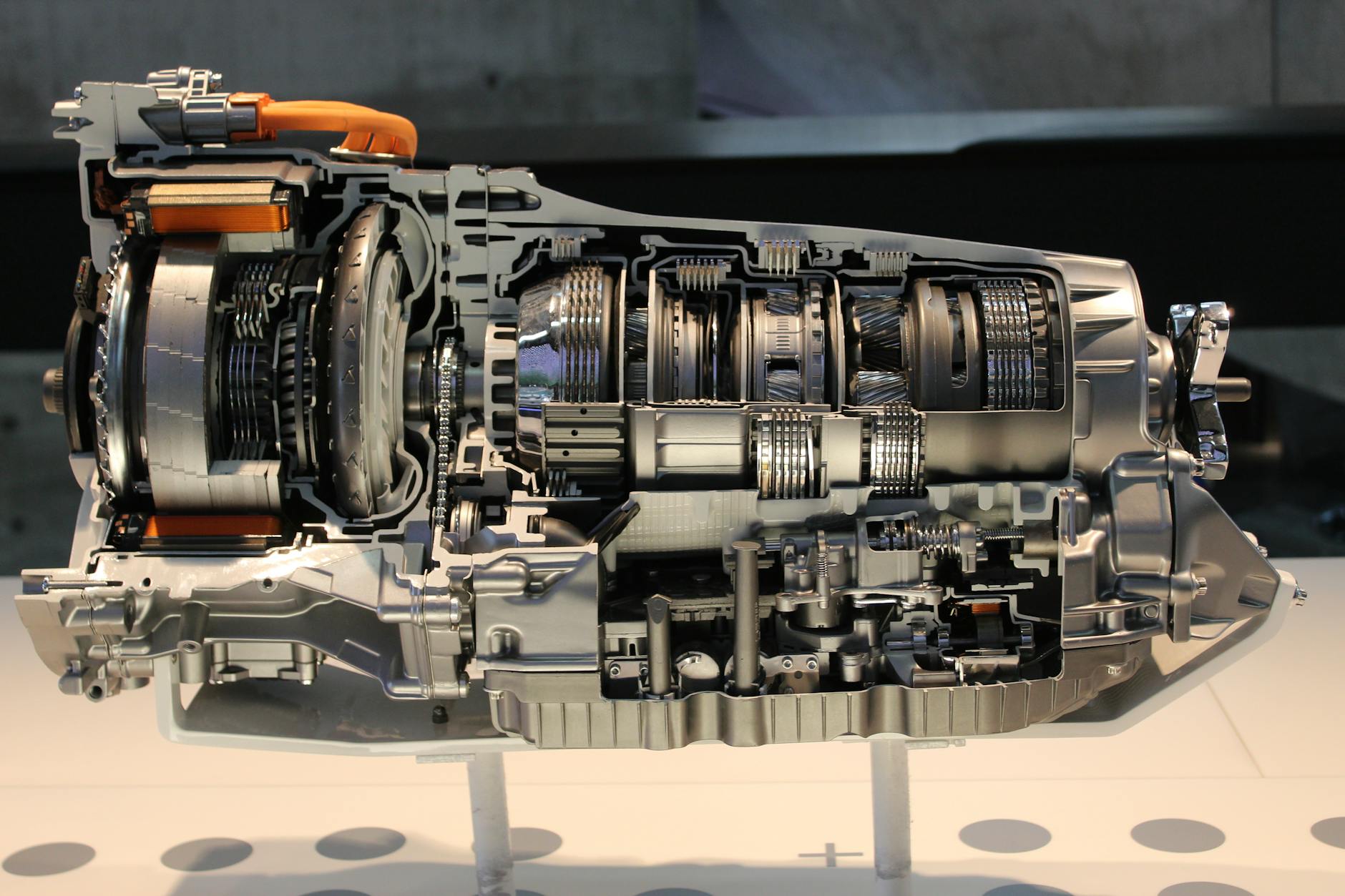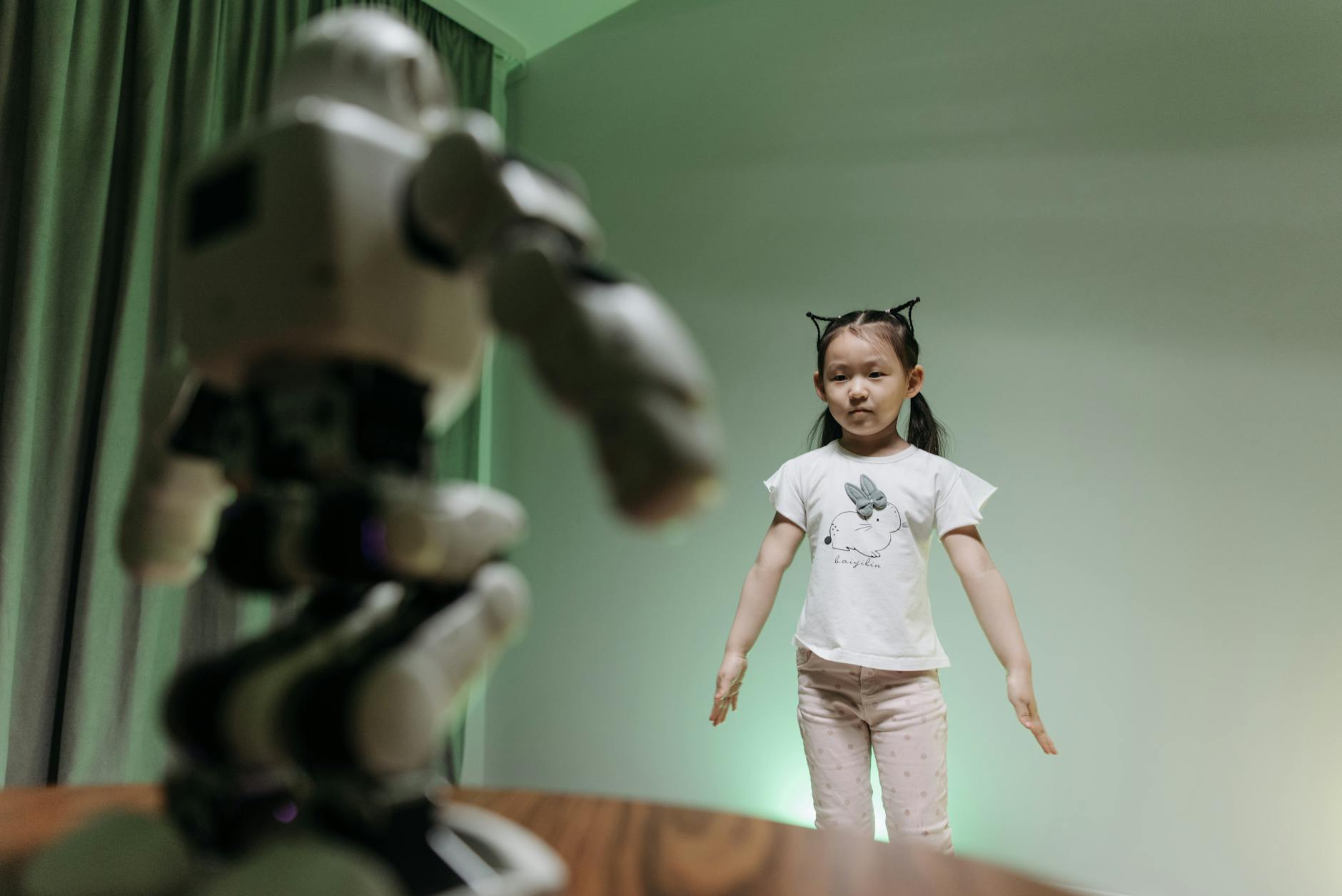Automotive AI: Transforming the Sector’s Future
Automotive AI Market Overview
Artificial intelligence (AI) is shaking up the car biz, flipping the script on how cars get designed, built, and sold. Let’s take a peek into the numbers and see what’s happening with AI in cars today.
Global Market Projection
So, here’s the scoop: the automotive AI market worldwide is on the up and up. By 2024, it’s heading towards some eye-popping figures, showing how car makers are latching onto AI tech. The climb isn’t slowing down either, with estimates saying that by 2027, AI in cars will be a $15.9 billion party. This boom is getting a big boost from AI’s role in making self-driving cars smarter, fine-tuning designs, speeding up production, smoothing out supply chain kinks, and perking up customer service (Markovate).
| Year | Market Size (Billion $) | Annual Growth Rate |
|---|---|---|
| 2024 | N/A | N/A |
| 2027 | 15.9 | 40% |
| 2033 | 35.71 | N/A |
Looking further down the road, the annual growth rate is expected to hit an amazing 55% from 2023 to 2033, with the market ballooning to $35.71 billion by 2033. This wild ride underscores how AI is becoming the backbone of car industry innovation and success.
AI Adoption Trends
The car world is tuning into AI big time. A lot of companies are diving into AI to keep up with the competition and to dream up new stuff. A recent survey from IBM in 2023 shows a whopping 73% of car-related businesses are either deep into AI or checking it out. This embrace of AI spotlights its importance for sprucing up the business.
Moreover, that same survey notes that 78% of these businesses have ramped up their AI spending over the last couple of years. This mad dash to plug into AI signals just how seriously they’re taking AI to jazz up their processes and impress customers (Itransition).
| AI Adoption Status | Percentage of Enterprises |
|---|---|
| Actively Deployed or Exploring AI | 73% |
| Accelerated AI Investments in Last 2 Years | 78% |
Tapping into AI doesn’t just streamline making cars; it’s reshaping how they look, how they’re sold, and how companies handle stuff from factory to showroom. This big move towards AI sets the stage for unprecedented growth and high-tech headway. If you’re curious about how AI is jiving in other fields, check out our stories on retail sector AI solutions and AI adoption in healthcare sector.
Banking on AI in the car scene is turning out to be a smart bet for staying ahead, gaining the edge, and meeting what people really want. With all these trends, the auto world seems revved up for a time when AI isn’t just part of the game—it’s changing it entirely.
Impact of AI in Automotive
Benefits for Automotive Enterprises
AI is flipping the automotive game upside down, bringing a ton of perks to car companies. An IBM survey from 2023 says 73% of these businesses have dipped their toes into AI or are planning to. Some of the cool stuff AI brings includes:
- Better Fuel Efficiency: AI can tell your car how to sip, not gulp, gas by keeping an eye on how you drive and tweaking things on the fly.
- Cutting Costs in Manufacturing: Robots and AI tag-teaming on the production line means lower costs and slicker operations.
- Safer Roads Ahead: Systems like ADAS, using AI, are all about keeping us safe with real-time warnings and helping make the best decisions on the road.
- Tailored Driving Experience: Your car gets personal with voice assistants and high-tech infotainment, making rides smarter and snazzier.
- Speedy Transport: AI revs up delivery speed by making the best use of every route, cutting down on wasted time.
- Better Customer Bonds: AI-fueled customer services mean more smiles and satisfaction all around.
- Lower Insurance Risks: Insurance companies can now be the smart ones at the party, thanks to AI’s sharp predictive skills, leading to better, tailored insurance plans.
- Top-Notch Quality: AI helps spot the good stuff, making sure high-quality parts roll off the line.
Use Cases in the Automotive Sector
AI is not just a pretty face; it’s changing how things work in the auto world with these killer applications:
- Voice Assistants with Some Sass: Chatty AI voices give you the lowdown on navigation and let you blast tunes without taking your eyes off the road.
- Fleet Management Like a Pro: AI steps up to guide fleets, cutting down fuel use, setting up maintenance, and keeping an eye on how drivers handle their wheels.
- Smart Safety Systems (ADAS): Adaptive cruise, emergency brakes that think for themselves—AI gets serious about safety.
- Self-Driving Wonders: Cars that steer themselves—like Tesla—read the road with their high-tech eyes and ears.
- Predictive Maintenance Magic: AI sees problems before they pop up, so your car takes a break when it wants, not when it has to.
- Supply Chains on Point: AI smooths over supply hiccups, taking charge from sorting out suppliers to lining up logistics.
- Augmented Reality Know-How: AR tech backed by AI turns car diagnostics and fixing glitches into a whole new interactive experience.
| AI Use Case | Get the Lowdown |
|---|---|
| Personal Voice Assistants | Talk to your car, keep hands on the wheel |
| Fleet Management | Streamlined routes, fuel-saving tips, driver tracking |
| ADAS | Safety first with AI’s quick-thinking help |
| Self-Driving Vehicles | Cars steering more like humans, but with AI smarts |
| Predictive Maintenance | Spot issues before the breakdown blues hit |
| Supply Chain Optimization | Keeping production lines hassle-free and active |
| AR for Diagnostics and Training | Fixing cars with a tech twist, thanks to AR smarts |
AI in cars isn’t just a little tweak; it’s shaking up the entire system. Curious about how AI’s revving up other industries? Check out our pieces on AI in healthcare and AI in finance to get the full scoop.
AI Applications in Manufacturing
AI technology is shaking things up in the car manufacturing scene, big time. It’s changing how things are made, making both the process smoother and the products better.
Boosting How We Make Things
In factories, AI plays the hero by cutting down on the energy we burn through formulas and calculations like a calculator on steroids. It keeps an eye on how much juice we’re using to make stuff and tweaks it for less waste, nudging companies towards greener ways without missing a beat (SPD Technology). Plus, AI is the mastermind behind getting all the parts in the right place at the right time—like a grocery store restocking plan on caffeine. It figures out what’s needed, when, and where from suppliers to the factory floor, saving on shipping costs and making life easier (SPD Technology).
And wait, there’s more! AI works its magic by spotting problems with machines before they go haywire. Think of it as a crystal ball for factory equipment, forecasting hiccups so repairs aren’t done in panic mode, machines live longer, and everything keeps running like clockwork, cranking out products (DATAFOREST).
Catch the wave on AI’s impact:
| Area | How It Helps |
|---|---|
| Energy Use | Less use, greener footprint |
| Supply Chain Smarts | Accurate demands; smooth inventory moves |
| Machine Health | Prevents breakdowns, keeps machines tip-top |
Making Products Perfect
AI isn’t just smart about making things; it’s also acing the quality control game. Tools like digital twins create digital copies of each product, picking up potential blunders before things go to the next stage.
In the car world, using AI for quality checks has become all the rage. Machine vision, stats crunching, and deep dives into data catch flaws early on. Finding issues quickly cuts down on recall headaches, saves money, earns that trusty thumbs-up from buyers, and makes sure things meet safety standards.
Some AI tricks helping out with product quality:
| Technology | Use Case | Gain |
|---|---|---|
| Digital Duplicates | Test runs on virtual versions | Precision and flaw spotting |
| Smart Cameras | Spotting mistakes as they happen | Fixes problems fast |
| Data Guessing | Looks at output data | Heads-up quality checks |
| Learning Computers | Unravels tricky problems | Better at predicting boo-boos |
AI in car manufacturing is driving huge changes, keeping the wheels of innovation turning. If you’re curious about how AI is doing its thing in other areas, go peek at AI’s magic in the healthcare sector and retail sector AI solutions.
Leading AI Innovations in Automotive
Artificial Intelligence (AI) advancements are shaking up the car industry, pumping out new gadgets and gizmos that make life on the road better for everyone. Here, we’ll take a peek at some of the big players using AI tech and the mind-blowing stuff happening in self-driving cars.
Companies Using AI Tech
A handful of companies are leading the charge, showing us their chops by squeezing AI tech into cars and cranking out jaw-dropping achievements.
AutoX
Rolling out from San Jose, California, AutoX is all about swapping out humans for robots, especially in taxi services and grocery deliveries in spots like China and California. They mix a fancy cocktail of AI, sensors, and cameras, tossing in loads of test runs to make sure their stuff doesn’t mess up (builtin).
Waymo
Based in Mountain View, California, Waymo’s cooking up self-driving cars that could probably see a flea in a blizzard, spotting pedestrians, cars, and cyclists from three football fields away. They’ve logged more than 20 million miles on the road without a hitch – that’s no small beer.
Magna International
Up in Aurora, Ontario, Magna International’s using AI to help cars notice weather changes, traffic, and speed limits. They also use it to make manufacturing and safety smoother. They even have this cool system that keeps tabs on car parts to flag an issue before it becomes a problem (builtin.com).
Motional
Hailing from Santa Monica, California, Motional chats up LiDAR, radar, and cameras to make self-driving dreams come true. They’re in bed with rideshare names like Lyft and Via, clocking 100,000 rides where nobody was at fault, making them a heavyweight in the robotaxi world.
Tesla
From sunny Palo Alto, California, Tesla jazzes up their electric rides with an Autopilot system. It can steer, speed up, slow down, switch lanes, and find a parking spot all on its own. But, they whisper, you’ll still need to play co-pilot with one hand on the wheel just in case.
Steps Forward in Self-Driving Tech
The sci-fi-like self-driving cars aren’t just tech candy; they’re changing how we think about hitting the road in a not-so-distant future.
See and React
This fancy visual tech is the bread and butter of letting cars drive themselves. Think Waymo and AutoX—these wizards use AI to help cars know what’s what as they roll along. Cameras, radar, and LiDAR combine their know-how to give cars a full-on panoramic view, so nothing sneaks by unnoticed.
Predicting Pitstops
Magna International takes AI beyond seeing – it’s snooping around to predict if something’s gonna break. The idea is to catch issues before they put a car out of action, saving bucks and time.
Ride-Sharing Robots
Motional and rideshare buddies like Lyft and Via are setting the bar high for driverless cab services. Their test drives are proving they’re not just tooting their own horn about safety and dependability.
| Company | Location | AI Application |
|---|---|---|
| AutoX | San Jose, CA | Robotaxi, driverless grocery delivery |
| Waymo | Mountain View, CA | Autonomous driving, advanced perception tech |
| Magna International | Aurora, ON | Object spotting, future-proof maintenance |
| Motional | Santa Monica, CA | Self-driving, robotaxi tech |
| Tesla | Palo Alto, CA | Autopilot (auto-driving, stopping, and parking) |
Want to know more about how AI is shaking things up elsewhere? Check out our takes on AI in finance, AI breaking new ground in healthcare, and AI changing up retail.
Future Trends in Automotive AI
Growth Projections
Buckle up, folks—AI in cars is gearing up for a wild ride. Predicted to hit $15.9 billion by 2027, the market is taking off like a rocket, zooming along with a growth rate of almost 40% a year. This leap’s being driven by AI’s varied roles, from making cars drive themselves all fancy-like to streamlining how they’re designed and slapped together.
Between 2023 and 2033, expect the amount of money car folks throw into AI to balloon, with some nerds crunching the numbers to say it’ll grow 55% each year. That means by 2033, we’re talking a whopping $35.71 billion market size, showing just how central AI’s getting in the gearhead world (Fullpath). Crazy numbers, right?
| Year | Market Size ($ Billion) | Annual Growth Rate (CAGR) |
|---|---|---|
| 2027 | 15.9 | Nearly 40% |
| 2033 | 35.71 | 55% |
Technological Advancements
AI ain’t just standing still; it’s racing ahead, promising some big time changes in car land. By 2030, every tenth car on the road might just be driving itself (DATAFOREST). Using AI to handle stuff with the grace of a well-balanced steering wheel, these smart rides are gonna make roads safer and smoother.
Some cool tricks AI’s pulling off include those over-the-air (OTA) updates. Leaders like Tesla, Mercedes-Benz, and VW are already on it, upgrading things like their cars’ brains to recognize traffic signs or navigate on their own, plus jazzing up how they handle tunes and talk back to you (CarEdge).
AI’s not just for show—it’s helping in building cars faster and better, making factories run like well-oiled machines and customer service as smooth as that first ride in your new wheels. It’s looking to shake things up in ways we’re only starting to see.
Curious about AI’s reach beyond the car world? Check out what it’s doing in retail, healthcare, and finance through our detailed looks at retail sector AI solutions, AI adoption in healthcare sector, and AI applications in finance sector.
AI Integration in Prominent Automotive Brands
Artificial intelligence is making waves in the car world, especially with giants like Tesla, Mercedes-Benz, and Volkswagen. These big names are using AI to make rides smoother, safer, and generally more awesome.
AI Features in Tesla Cars
Tesla’s got the cool kid rep in AI tech for cars. By 2024, every Tesla comes with the Autopilot system, a fancy AI gizmo powered by NVIDIA. It’s got some handy autonomous features for a breezy drive on highways and when swapping lanes.
For folks who want to jazz up the tech game, there’s the Full-Self Driving package. It’ll set you back around $8,000, but this bad boy takes your ride to another level, handling traffic lights, stop signs, and giving you an almost hands-off city and highway driving experience (CarEdge).
All in all, Tesla’s tech makes driving easier and safer. Handling tricky traffic and making snap decisions, they’ve definitely got a leg up in the AI car world.
| Tesla AI Features | What It Does |
|---|---|
| Autopilot | Does some of the driving for you (highways, lane changes) |
| Full-Self Driving Package | Goes the extra mile (traffic lights, city driving) |
Mercedes-Benz and Volkswagen AI Integration
Mercedes-Benz isn’t messing around with AI either. They’re not just about self-driving; their cars talk to you too, upgrading infotainment systems. Their Level 3 system got the U.S. thumbs up for taking over most driving tasks without much help from you (CarEdge). And then there’s the MBUX Virtual Assistant, jazzing up the ride with sleek graphics and snazzy AI, making every drive feel personally catered.
Volkswagen is spicing things up by blending OpenAI’s ChatGPT into their models, starting in 2024 (CarEdge). This means you’ll have chat-style conversations with VW’s voice assistant IDA, making interactions smooth and comfy.
This addition is available in VW models like ID.3, ID.4, ID.5, ID.7, Tiguan, Passat, and Golf, clearly showing they’re all about future vibes with slick AI chat features.
| Brand | AI Features | What’s Cookin’ |
|---|---|---|
| Mercedes-Benz | Level 3 Driving, MBUX System | Smart driving, chatty infotainment |
| Volkswagen | ChatGPT Voice Assistant | Chat-style voice interactions with IDA |
These steps show how top car makers are shaking things up with AI. If you want to see more AI magic in different spots, check out advancements in the retail sector, healthcare sector, finance sector, and education sector.













